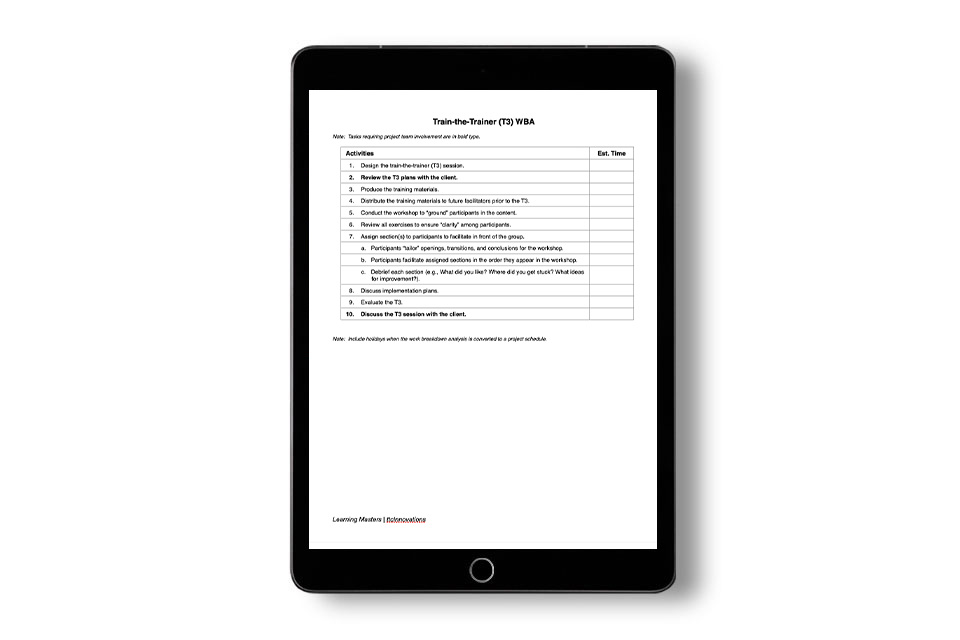A project manager is like an orchestra conductor. According to the Fort Collins Symphony:
A conductor brings a unified vision to the music. The conductor beats time and prepares the musicians in rehearsal, but most importantly the conductor considers every aspect of the music and how to make it as inspiring and incredible as possible. Then they work with the orchestra to make that vision come alive.

I believe a PM “brings a unified vision of success to projects” they manage. I’ll leave it to the reader to make their own connections with the simile I’ve suggested.
35 years of Experience
I founded Learning Masters in 1988. My company specializes in instructional design and the development of custom-learning solutions. The information presented in this blog has been refined over the last 35 years I’ve been in business. My previous experience working for 3M Corporation and Wilson Learning Corporation built the foundation for my way of doing business.
When I started Learning Masters, losing money on projects was not an option (e.g., I didn’t have “deep pockets” like a large company may have). I needed a process for planning, estimating costs, scheduling, and fulfilling SOW requirements. In response to that need, I developed expertise in Work Breakdown Analysis (WBA). It’s a planning process for project managers to organize their projects. It’s essential if you work on fixed-price contracts. If you work on an hourly basis, this article may not be as relevant for you.
Project Management
Project management involves using established principles, processes, policies, and tools to guide a project from the beginning until the end.

Work Breakdown Analysis is part of the planning process and is a key PM competency.
- It involves breaking a project down into its component parts and identifying all the activities or tasks that must be performed.
- Completion times are estimated for each activity.
- The estimated times to complete activities are used to create project schedules and project costs.
- A WBA can be inserted into project management software.
Work Breakdown Analysis Benefits
WBA has many benefits.
- Makes project planning more efficient and effective.
- Guides the selection of project resources.
- Contributes to more accurate pricing (e.g., facilitates tracking time).
- Helps prepare schedules that are realistic.
- Reduces stress due to better up‐front planning.
- Minimizes the need for change orders (e.g., they will occur only when the client changes deliverables and expands the scope of a project).
- Forms the foundation for completing projects on time, within budget, and in a way that meets or exceeds client expectations.
On many of my projects, the actual time spent has been within hours of the time estimated. This means the projects were profitable!
Work Breakdown Analysis “How-tos”
Develop a WBA for each project deliverable (e.g., proposed or known). Most of my WBAs are developed pre-contract either based on a needs analysis or client request. Here’s what I do:
- Identify the tasks, in sequence, that need to be completed for each deliverable.
- Include review and revision cycles for the project. I usually assume 3 drafts or revision cycles. This will vary with clients and industries. For example, in the Pharma and Medical Device industries there are many more revision cycles due to legal and regulatory reviews.
- Estimate the time it will take to complete each activity. I use the Hours Tracker app to track my ID time. When estimating time, I’ll refer to historical data I have if the deliverables are similar.
- Apply the “X + ½ X + ¼ X Formula” to estimate total hours. Over time, I developed an “X + ½ X + ¼ X Formula” to estimate the time for revision cycles. X = estimated time for Draft 1. Draft 2 will take half as much time as Draft 1 to create. Draft 3 will take ¼ of the time estimated for Draft 1.
For example: Draft 1 Estimate = 100 hours; Draft 2 = 50 hours; Draft 3 = 25 hours; Total Estimate = 175 hours
This formula may be modified depending on the client and the industry. If the type of deliverable Is new or the client is challenging, a 10 – 15% contingency may be added to the estimated time.
- Use the WBA to create a project schedule. If you’re using project management software, you can use the time estimates to create a Gannt Chart.
Want to try implementing WBA into your project management process? Download the templates below!

FREE Download!
Snag this all-in-one Work Breakdown Analysis Template which includes five helpful templates to project manage your L&D initiative to success!
Project managers are evaluated on their success in completing projects on time, within budgets, and in a way that meets or exceeds client expectations. Using the Work Breakdown Analysis process I’ve described, will make you a more efficient, effective, and successful project manager.


#UnlockInnovation With Us
• Collaborative and supportive network
• Work with L&D industry influencers
• Access to professional development
• Flexible hours and virtual environment






